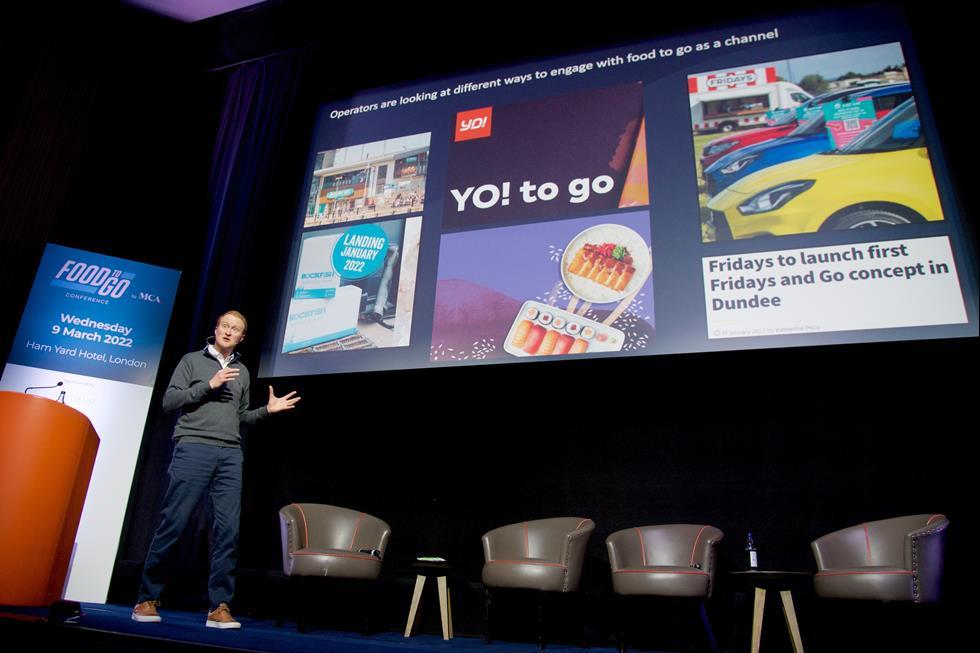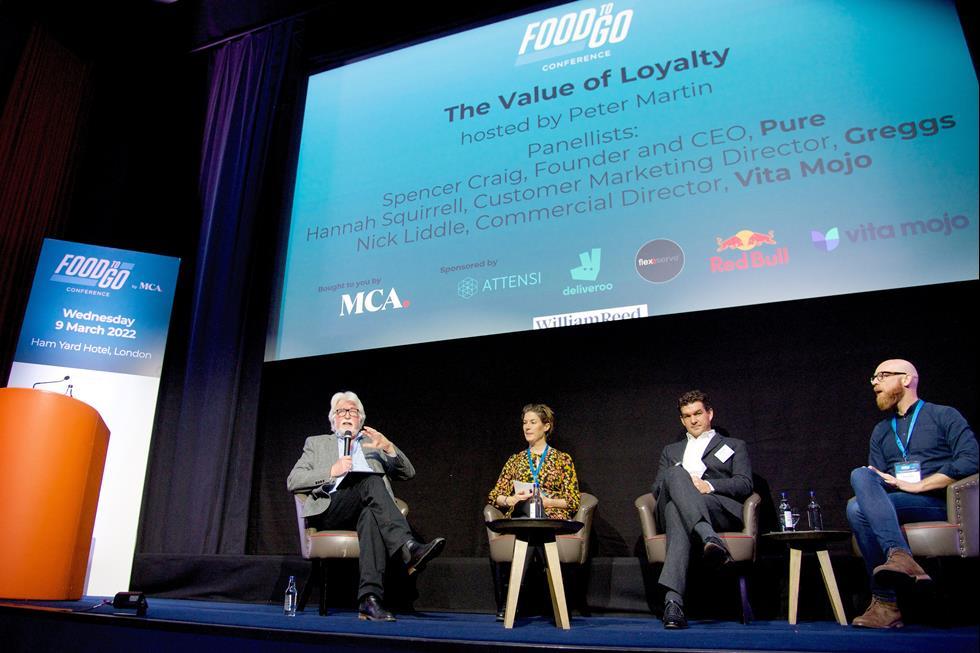Over 200 people attended the 2022 MCA Food to Go Conference in London on 9th March, where attendees were treated to a day’s programme of interviews, panel debates and industry insights.
Delegates heard presentations from some of the biggest food to go operators such as Café Nero, itsu, Leon, Pret and Greggs.
In this blog, we look at five key takeaways from the conference…
- Expect the food to go market to bounce back strongly
- Creating an omnichannel experience is key in customer acquisition
- Working from home is here to stay
- Recruiting and retaining staff remains a challenge
- Flexitarian trends in the food to go market
1. Expect the food to go market to bounce back strongly
The food to go market took a significant hit during the pandemic, but it recovered by 38% in 2021, and is expected to reach £25bn by 2025. According to Lumina Intelligence, this value is set to be driven by accelerated physical expansion, new product development and technology-led efficiencies such as revamped digital loyalty propositions.
And while inflation continues to hit businesses and consumers from all angles, Lumina believes the low ticket nature of food to go means consumers are unlikely to massively restrict their spending on the channel.
In fact, office worker spending is up 18% despite visitation being down 40% since pre pandemic. This highlights while consumers are buying food to go products on a less frequent basis, they’re looking to ‘treat’ themselves more when they do. It also explains why there’s a trend towards new product development premiumisation, with 34% NPD in Q1 2022 priced at over £4 each. An example of this is Pret’s meatless meatball and feta hot rice bowl, which launched in February 2022 and is priced at £6.25.
In terms of new opportunities, Lumina anticipates a return to more classic lunch options such as salads, sandwiches and wraps, which are all well placed to tap into the increased average spends at lunch.

Photo courtesy of MCA Insight
2. Creating an omnichannel experience is key in customer acquisition
Improving the omnichannel customer loyalty experience is one of the main focuses for food to go businesses, who are looking for new ways to engage with customers outside of the store.
Both Greggs and Pure have recently launched apps and subscription models to enhance customer convenience by acting as a one-stop shop for click and collect, delivery and receiving discounts. Greggs is also increasing its focus on customer acquisition through digital channels.
New channels bring new challenges though, with Hannah Squirrell, Customer Marketing Director at Greggs, highlighting the difficulty of replicating brand personality through click and collect. The volume of data available from an omnichannel approach is another challenge.
“Getting all the data together is quite a complicated picture,” said Squirrell. “The road ahead is long but it’s an exciting one.”
Spencer Craig, founder and CEO at Pure, revealed how their similar convenience-driven approach as Greggs had allowed them to be more aggressive in customer acquisition. “It’s people and food first,” said Craig. “[Digital] is another channel, but ultimately, the food has to be fantastic.” 
Photo courtesy of MCA Insight
3. Working from home is here to stay
The way people work has completely changed in the past two years, with many people adopting a hybrid working approach where they may visit the office a few times a week. This was highlighted in a recent CGA Strategy report, that found nearly half of consumers (45%) do not plan to stop working from home or plan to work from home for the foreseeable future.
With home now the daytime hub for workers, this opens up new sales opportunities for independent retailers – especially those with local footfall – to obtain new customers.
CGA’s findings also revealed that 75% of consumers believe it’s important to have healthier options available when eating out. This means businesses who can adapt to today’s flexible (but healthier) worker can tap into new revenue streams.
4. Recruiting and retaining staff remains a challenge
Despite all restrictions in the UK being lifted, many restaurants are struggling to recruit enough staff to manage post-pandemic demand, with vacancies in pubs and restaurants at an all-time high. Research from CGA found only 26% of business leaders are confident in staff recruitment/retention, outweighed by the 40% who are not.
Workers in the food industry have attributed labour shortages to poor pay and working conditions, as well as ongoing Covid-19 safety concerns. In response, 72% of business leaders say they are working on cultivating the right working culture to increase staff retention, while 64% have been placing an emphasis on staff wellbeing and mental health.
How businesses value their employees is also of interest to consumers, with 17% of coffee and quick service restaurant consumers saying they consider how well the venue treats staff when choosing an outlet. Issues like employee rights are becoming more well documented and need to be taken seriously by business leaders to boost staff retention and increase trust with consumers.

Photo courtesy of MCA Insight
5. Flexitarian trends in the food to go market
Over a third (34%) of food to go consumers describe themselves as flexitarian and are more likely to be non-drinkers, vegetarian and non-dairy. This highlights how important it is for food to go businesses to cater to these needs across new product development and proposition.
Additionally, 70% of consumers say they are now leading a healthier lifestyle than they were before the pandemic, up from 65% in 2019.
Food to go market leaders have already begun targeting health-conscious home workers, with Leon launching a range of “plant-rich” soups and salads into Sainsbury’s. The range is 100% vegan and gluten-free, with all the soups coming in under 300 calories and providing consumers with two of their five a day. And with exciting flavours like curried coconut and sweet potato, it’s clear to see why these are popular with remote workers.
Innovation in the food to go industry
New trends (such as vegan and flexitarian), new headliner products (salads and wraps) and new consumer demands (healthier options and the environment) are driving innovation in the food to go market. By leveraging technology, you can experiment with ideas and concepts in whole new ways. But the tech you adopt needs to be tailored to your specific needs.
In our guide, we cover:
- The latest technology trends
- How you can ensure a smooth digital transformation
- And more
Download it below.

